‘The question is not whether another major earthquake will take place but when.’
On January 15 at 11.15 am, the population of Arraiolos – some 120 km east of Lisbon – was startled by an earthquake with a magnitude of 4.9 on the Richter scale. There were no casualties and the damage was limited to a few cracks.
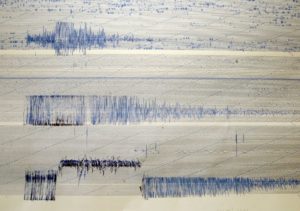 ‘This earthquake can be considered as moderately severe’, says Fernando Carrilho, chief seismologist at the IPMA (Portuguese Institute of the Sea and Atmosphere). ‘People shouldn’t worry too much as the southern part of the country has always been seismic active.’
‘This earthquake can be considered as moderately severe’, says Fernando Carrilho, chief seismologist at the IPMA (Portuguese Institute of the Sea and Atmosphere). ‘People shouldn’t worry too much as the southern part of the country has always been seismic active.’
‘It has to do with earth crust activity, where 2 tectonic plates are pushing against each other over the last thousands of years’, explains Pedro Cunha, a geologist at the University of Coimbra. ‘The African plate moves to the northwest and lifts the Iberian plate, that is moving to the east. So, the question is not whether a major earthquake will take place but when. Unfortunately, nobody can – despite all our sophisticated measuring devices – predict the latter.’
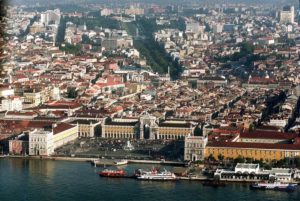 ‘Preventive measures are warranted’, especially in the densely populated areas in the south – like Lisbon and the Algarve – that are most at risk’, says Daniel Oliveira, a civil engineer at the University of Minho. ‘Although a law from 1958 requires earthquake-proof construction, most buildings in the historic capital date from before that time and there is hardly any monitoring of the implementation of the law.’
‘Preventive measures are warranted’, especially in the densely populated areas in the south – like Lisbon and the Algarve – that are most at risk’, says Daniel Oliveira, a civil engineer at the University of Minho. ‘Although a law from 1958 requires earthquake-proof construction, most buildings in the historic capital date from before that time and there is hardly any monitoring of the implementation of the law.’
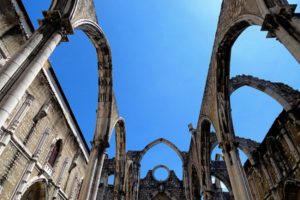 Over the past 500 years, Portugal has suffered four major earthquakes – in 1531, 1755, 1909 and 1969 – with a magnitude of 6 or more on the Richter scale. The biggest and by far most tragic one was in 1755. With a magnitude of 9 on the Richter scale, it developed apocalyptic proportions and completely wiped out the lower part of the capital. This earthquake (terramoto) inspired poets, influenced philosophers, activated prophets and motivated politicians – like the Marquis of Pombal – to a completely new architectural reconstruction of the Baixa, Lisbon’s city center.
Over the past 500 years, Portugal has suffered four major earthquakes – in 1531, 1755, 1909 and 1969 – with a magnitude of 6 or more on the Richter scale. The biggest and by far most tragic one was in 1755. With a magnitude of 9 on the Richter scale, it developed apocalyptic proportions and completely wiped out the lower part of the capital. This earthquake (terramoto) inspired poets, influenced philosophers, activated prophets and motivated politicians – like the Marquis of Pombal – to a completely new architectural reconstruction of the Baixa, Lisbon’s city center.
The last severe earthquake was in 1969. Although it had a force of 7.9, the damage was limited as its epicenter was 250 km away from Lisbon. ‘The bigger the distance, the less harm’, says Maria Baptista of the Geophysical Center at the University of Lisbon.
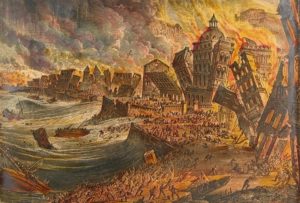
In memory of Portugal’s main natural disaster, the City Council has recently approved plans to build – in collaboration with the private company Turicultur ( Tourism and Culture in Portugal) – within two years an earthquake museum (Museu do Terramoto) in Belem.
Bom fim de semana Have a great weekend
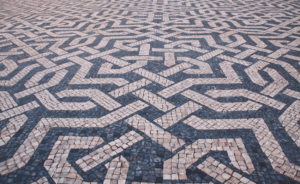
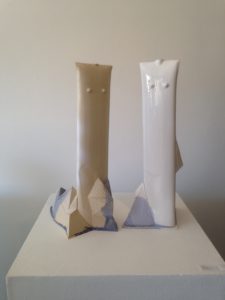
 Nowadays, half of the children are born outside marriage and in 20% parents also do not live together, a number that has doubled in the last 6 years.
Nowadays, half of the children are born outside marriage and in 20% parents also do not live together, a number that has doubled in the last 6 years. In parallel to a decline in the number of marriages, there has been an increase in the number of divorces, with Portugal ranking first in Europe. Remarkable is that women have to wait longer than men before they can remarry, ten months instead of six!
In parallel to a decline in the number of marriages, there has been an increase in the number of divorces, with Portugal ranking first in Europe. Remarkable is that women have to wait longer than men before they can remarry, ten months instead of six! Same-sex marriages comprise only 1% of the wedlock but are four times more common in Lisbon and Porto than in the sparsely populated interior. Since 2010 – when gay marriage became legally possible in Portugal – 2300 gay couples have married, two-thirds being men.
Same-sex marriages comprise only 1% of the wedlock but are four times more common in Lisbon and Porto than in the sparsely populated interior. Since 2010 – when gay marriage became legally possible in Portugal – 2300 gay couples have married, two-thirds being men. Portugal’s famous pavement originates from the nineteenth century.
Portugal’s famous pavement originates from the nineteenth century. 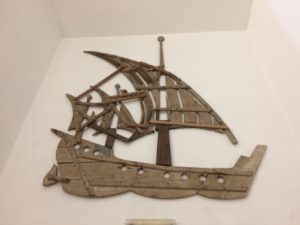 Calçada Portuguesa ( Portuguese-style pavement) is characterized by tight paving with small, irregularly shaped – usually white and black – limestones. Not only ships, animals, stars, flowers, anchors or mermaids inhabit the ground, also geometric patterns show themselves as magnificent stony carpets. Their extraordinary symmetry is impressive in this respect.
Calçada Portuguesa ( Portuguese-style pavement) is characterized by tight paving with small, irregularly shaped – usually white and black – limestones. Not only ships, animals, stars, flowers, anchors or mermaids inhabit the ground, also geometric patterns show themselves as magnificent stony carpets. Their extraordinary symmetry is impressive in this respect.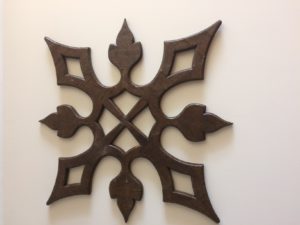 Figures in artistic sidewalks and squares – characterized by the application of stones of different color and shape – were traditionally performed with the aid of wooden molds. The base-color stone, usually white, is first laid around the mold and after removal, the darker stones are fitted inside.
Figures in artistic sidewalks and squares – characterized by the application of stones of different color and shape – were traditionally performed with the aid of wooden molds. The base-color stone, usually white, is first laid around the mold and after removal, the darker stones are fitted inside.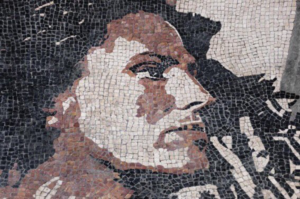 Advantages of mosaic pavement are the use of local materials, its sustainability (stones can be re-used), the ease of removal, the invisibility of restorations (when performed professionally), the efficient drainage and its cultural and touristic value.
Advantages of mosaic pavement are the use of local materials, its sustainability (stones can be re-used), the ease of removal, the invisibility of restorations (when performed professionally), the efficient drainage and its cultural and touristic value.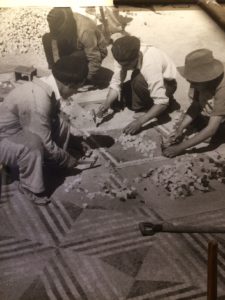
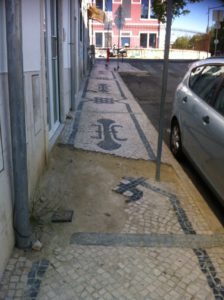
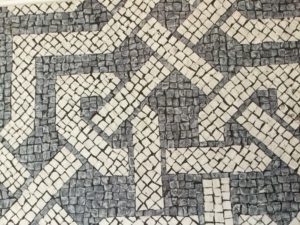 Since Portugal has been declared World’s Leading Destination and Lisbon Best City Break in 2017, I’ am sure you are dying to visit the country in order to see for yourself, whether these prestigious awards are justified.
Since Portugal has been declared World’s Leading Destination and Lisbon Best City Break in 2017, I’ am sure you are dying to visit the country in order to see for yourself, whether these prestigious awards are justified. 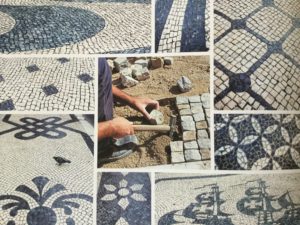 However, that hasn’t always been the case. It started as a forced task performed by prisoners in the nineteenth century. Only later it evolved into a craft and pavers (calceteiros) became recognized artisans, whose art became appreciated in such a way, that it spread to many cities and continents.
However, that hasn’t always been the case. It started as a forced task performed by prisoners in the nineteenth century. Only later it evolved into a craft and pavers (calceteiros) became recognized artisans, whose art became appreciated in such a way, that it spread to many cities and continents.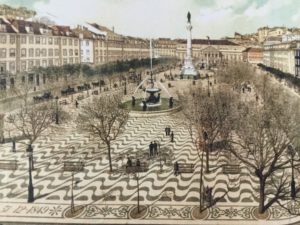 It became an immediate success and similar works were ordered, such as the paving of Lisbon’s major square Praça D. Pedro IV – popularly known as Rossio (meaning ‘wide and public space’) – that took place between 1846 and 1849.
It became an immediate success and similar works were ordered, such as the paving of Lisbon’s major square Praça D. Pedro IV – popularly known as Rossio (meaning ‘wide and public space’) – that took place between 1846 and 1849.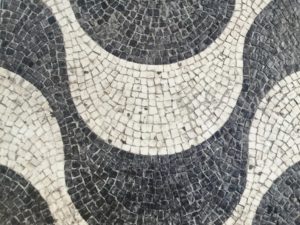 The pavement of Rossio was called ‘Wide Sea’ (Mar Largo) for depicting waves, symbolizing the encounter between the Tagus river and the Atlantic Ocean, which launched the Portuguese into the Discoveries in the 15th century. After Rossio, Lisbon adopted mosaic pavement for all its squares and sidewalks and it became the most popular pavement in historic Portuguese towns and famous worldwide.
The pavement of Rossio was called ‘Wide Sea’ (Mar Largo) for depicting waves, symbolizing the encounter between the Tagus river and the Atlantic Ocean, which launched the Portuguese into the Discoveries in the 15th century. After Rossio, Lisbon adopted mosaic pavement for all its squares and sidewalks and it became the most popular pavement in historic Portuguese towns and famous worldwide.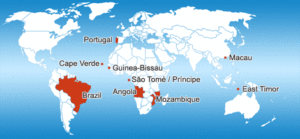 The majority of the ‘new citizens’ originate from Portuguese speaking countries such as Brazil (120.000), Cape Verde (75.000), Guinea–Bissau (35.000), and Angola (35.000). During the same period, a considerable number of Ukrainians (25.000) and Romanians (30.000) settled in the country.
The majority of the ‘new citizens’ originate from Portuguese speaking countries such as Brazil (120.000), Cape Verde (75.000), Guinea–Bissau (35.000), and Angola (35.000). During the same period, a considerable number of Ukrainians (25.000) and Romanians (30.000) settled in the country.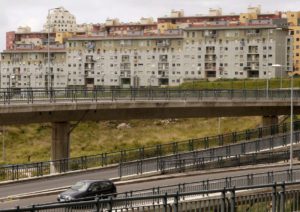
 Timothy Macedo – from the NGO Solidaridade Imigrante (SOLEM) – is happy with the new law, but points out that there are more than 30.000 illegals (the vast majority living in Lisbon) and that most of them are waiting for years to be assessed by the Foreigners and Borders Service (SEF).
Timothy Macedo – from the NGO Solidaridade Imigrante (SOLEM) – is happy with the new law, but points out that there are more than 30.000 illegals (the vast majority living in Lisbon) and that most of them are waiting for years to be assessed by the Foreigners and Borders Service (SEF). It all started in July 2016 when the national football team – with captain Cristiano Ronaldo as the best male footballer in the world – won the European Football Championship for the first time in history.
It all started in July 2016 when the national football team – with captain Cristiano Ronaldo as the best male footballer in the world – won the European Football Championship for the first time in history.
 Nine months after the Football Championship, Portugal delivered another number one, by winning the Eurovision Song Contest 2017 with Salvador Sobral’s ‘Amar Pelos Dois’ [
Nine months after the Football Championship, Portugal delivered another number one, by winning the Eurovision Song Contest 2017 with Salvador Sobral’s ‘Amar Pelos Dois’ [ Seven months after the Eurovision Song contest the Portuguese economist and Minister of Finance – Mário Centeno – was elected as the next president of the Eurogroup, an informal but powerful gathering of 19 eurozone finance ministers. Centeno will be the first holder of the post from one of the South-European countries forced into a bailout by the euro crisis.
Seven months after the Eurovision Song contest the Portuguese economist and Minister of Finance – Mário Centeno – was elected as the next president of the Eurogroup, an informal but powerful gathering of 19 eurozone finance ministers. Centeno will be the first holder of the post from one of the South-European countries forced into a bailout by the euro crisis. And last but not least, just before the end of this year, the World Travel Awards designated Portugal as the World’s Leading Destination in tourism. It is the first time that a European country wins this prestigious award. In addition, Lisbon won the award for best City Break in the world. The WTA’s – founded in 1993 – are internationally considered as ‘the Oscar’s of tourism’. In September Portugal had already won the award for Europe’s Leading Destination [
And last but not least, just before the end of this year, the World Travel Awards designated Portugal as the World’s Leading Destination in tourism. It is the first time that a European country wins this prestigious award. In addition, Lisbon won the award for best City Break in the world. The WTA’s – founded in 1993 – are internationally considered as ‘the Oscar’s of tourism’. In September Portugal had already won the award for Europe’s Leading Destination [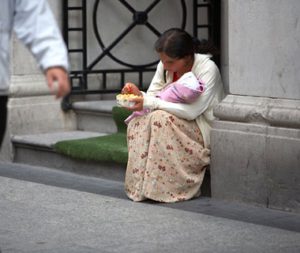 Prejudices about gypsies are very persistent. They are said to be stealing, begging, criminal and asocial.
Prejudices about gypsies are very persistent. They are said to be stealing, begging, criminal and asocial.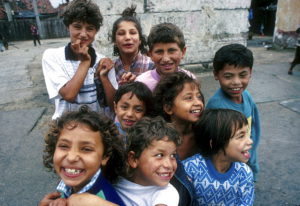
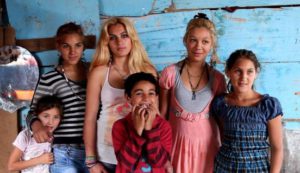 Last year Leonor Teles, a 23-year-old Portuguese film director whose father is Roma, won with her Rhoma Acans ( Gypsy Eyes) in Berlin the Golden Bear Award for the best short film.
Last year Leonor Teles, a 23-year-old Portuguese film director whose father is Roma, won with her Rhoma Acans ( Gypsy Eyes) in Berlin the Golden Bear Award for the best short film.
 Obesity is Portugal’s biggest Public Health problem
Obesity is Portugal’s biggest Public Health problem 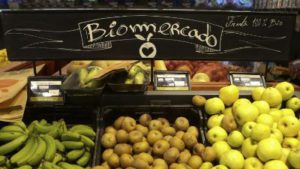 ‘That social inequality has an impact on health is beyond doubt.
‘That social inequality has an impact on health is beyond doubt. The average Portuguese eats for two, meaning almost 4000 calories per person per day!
The average Portuguese eats for two, meaning almost 4000 calories per person per day!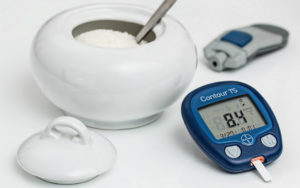 As a result of the obesity epidemic diabetes is very common and Portugal even has the highest prevalence of diabetes in Europe. One in every 7 citizens is affected and 25% of the people – who die in hospital – have diabetes. The risk to get the disease is four times higher in people, who haven’t completed primary school – a number twice as high in Portugal, than elsewhere in Europe.
As a result of the obesity epidemic diabetes is very common and Portugal even has the highest prevalence of diabetes in Europe. One in every 7 citizens is affected and 25% of the people – who die in hospital – have diabetes. The risk to get the disease is four times higher in people, who haven’t completed primary school – a number twice as high in Portugal, than elsewhere in Europe.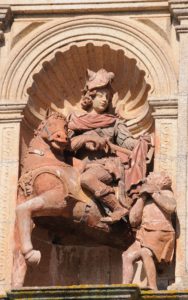 St. Martin’s Day is associated with the maturation of the year’s wine. It is a feast of Celtic roots that celebrates the end of summer and the start of winter.
St. Martin’s Day is associated with the maturation of the year’s wine. It is a feast of Celtic roots that celebrates the end of summer and the start of winter.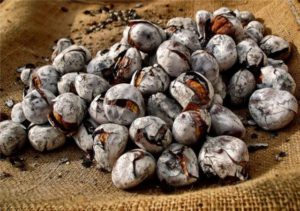 Groups of friends and families celebrate these warm days in November outdoors and used to gather around a bonfire, where they roasted chestnuts directly in the fire drank água-pé (water-foot), jeropiga, new wine and danced and sang. It was customary for girls to bring the chestnuts and for boys to bring the wine.
Groups of friends and families celebrate these warm days in November outdoors and used to gather around a bonfire, where they roasted chestnuts directly in the fire drank água-pé (water-foot), jeropiga, new wine and danced and sang. It was customary for girls to bring the chestnuts and for boys to bring the wine.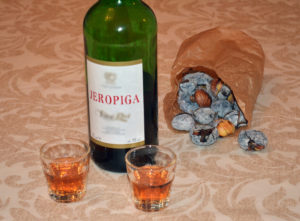 Água-pé (water-foot) is a light alcoholic beverage made by adding water to crushed grapes – after the juice is pressed out for wine – and letting it ferment for several days. Jeropiga – a sweet and strong fortified wine – is obtained in a similar way by adding brandy(aguardente) to the mash (pomace) of grapes, instead of water.
Água-pé (water-foot) is a light alcoholic beverage made by adding water to crushed grapes – after the juice is pressed out for wine – and letting it ferment for several days. Jeropiga – a sweet and strong fortified wine – is obtained in a similar way by adding brandy(aguardente) to the mash (pomace) of grapes, instead of water.